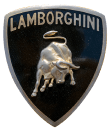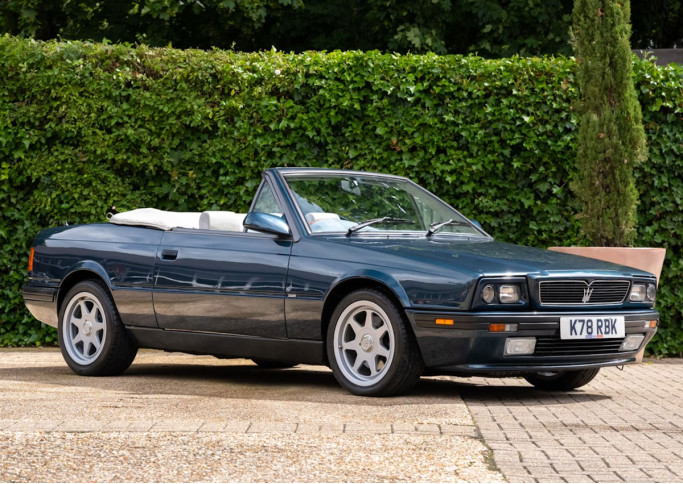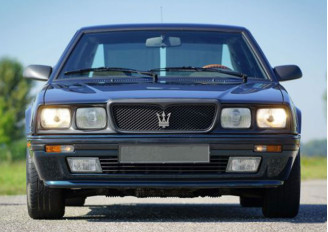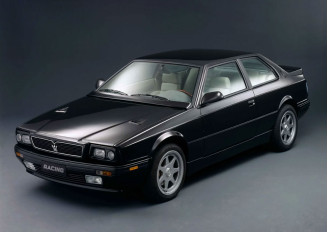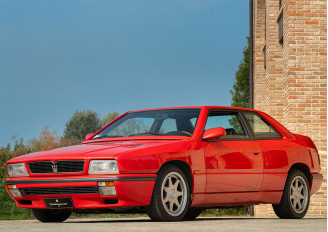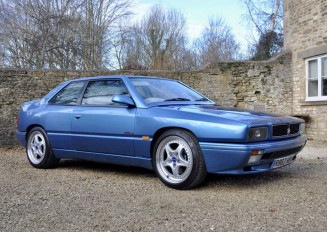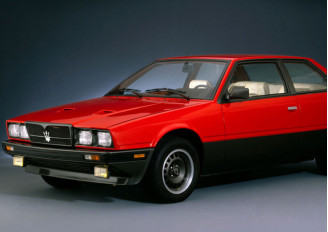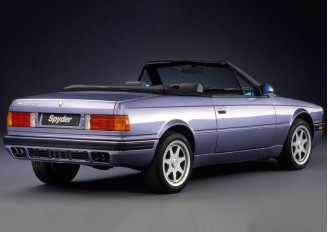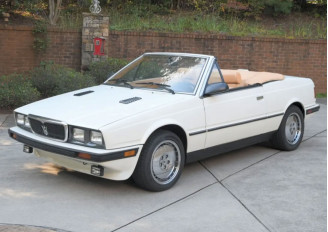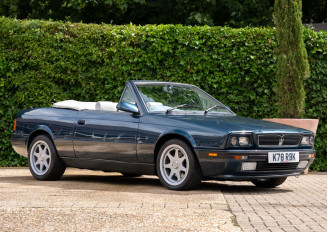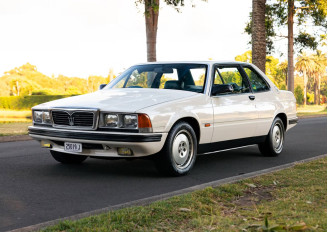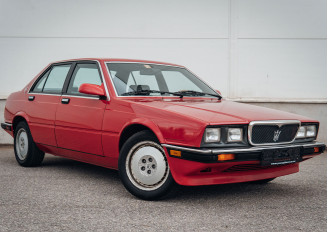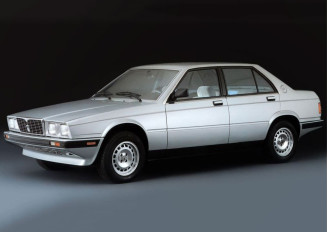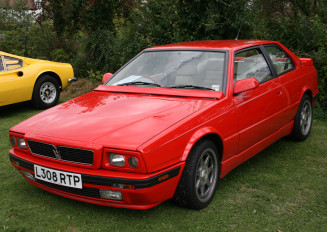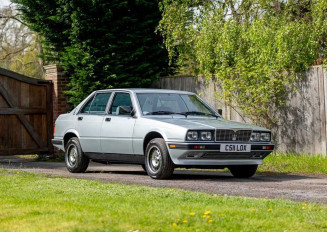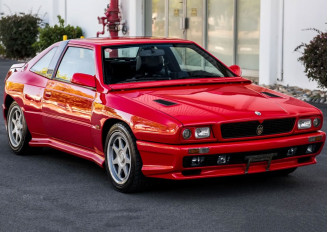The best Maserati Biturbo models of all time: Top ranking of the best Maserati Biturbo cars from 1981-1994
Content
- 1 History of the Maserati Biturbo
- 2 Top rating of the best Maserati Biturbo cars
- 2.1 Maserati Biturbo
- 2.2 Maserati Biturbo 222 E
- 2.3 Maserati Biturbo 425
- 2.4 Maserati Biturbo 420
- 2.5 Maserati Biturbo 430
- 2.6 Maserati Biturbo 422
- 2.7 Maserati Biturbo Spyder
- 2.8 Maserati Biturbo Spyder 90
- 2.9 Maserati Biturbo Spyder 3
- 2.10 Maserati Biturbo 228
- 2.11 Maserati Karif
- 2.12 Maserati Shamal
- 2.13 Maserati Racing
- 2.14 Maserati Ghibli
- 2.15 Maserati Ghibli Cup
The best Maserati Biturbo models of all time: Top ranking of the best Maserati Biturbo cars from 1981-1994
The Maserati Biturbo was a car that aimed to bring Italian style and affordable performance to a wider market, which was a bold and innovative decision. The sharp 80's styling and luxurious interior exuded the sporty character of this car. Exciting power was provided by the twin-turbocharged V6 engine that was the heart of the Maserati Biturbo.
History of the Maserati Biturbo
The Maserati Biturbo is a car that was a real breakthrough in its class. It was the first mass-produced car to be equipped with a twin turbocharger, pushing the limits of performance for its time.
The name "Biturbo" is quite simple and logical, as it refers to the two (bi) turbochargers installed in the car. This technical solution made it possible to avoid the high taxes imposed in Italy on cars with an engine capacity of more than 2.0 liters, while at the same time offering outstanding performance.
The Biturbo became the basis for the creation of a whole range of different body styles. Buyers were offered sedans, coupes, convertibles, and even the ultra-rare Karif wagon, which has become a collector's gem.
The original 2.0-liter V6 biturbo engine was a wise choice by Maserati's engineers, who were able to give the car outstanding performance while staying within Italian tax laws. This made it possible to make the Biturbo available to a wider range of customers while maintaining its high performance.
Top rating of the best Maserati Biturbo cars
Maserati Biturbo
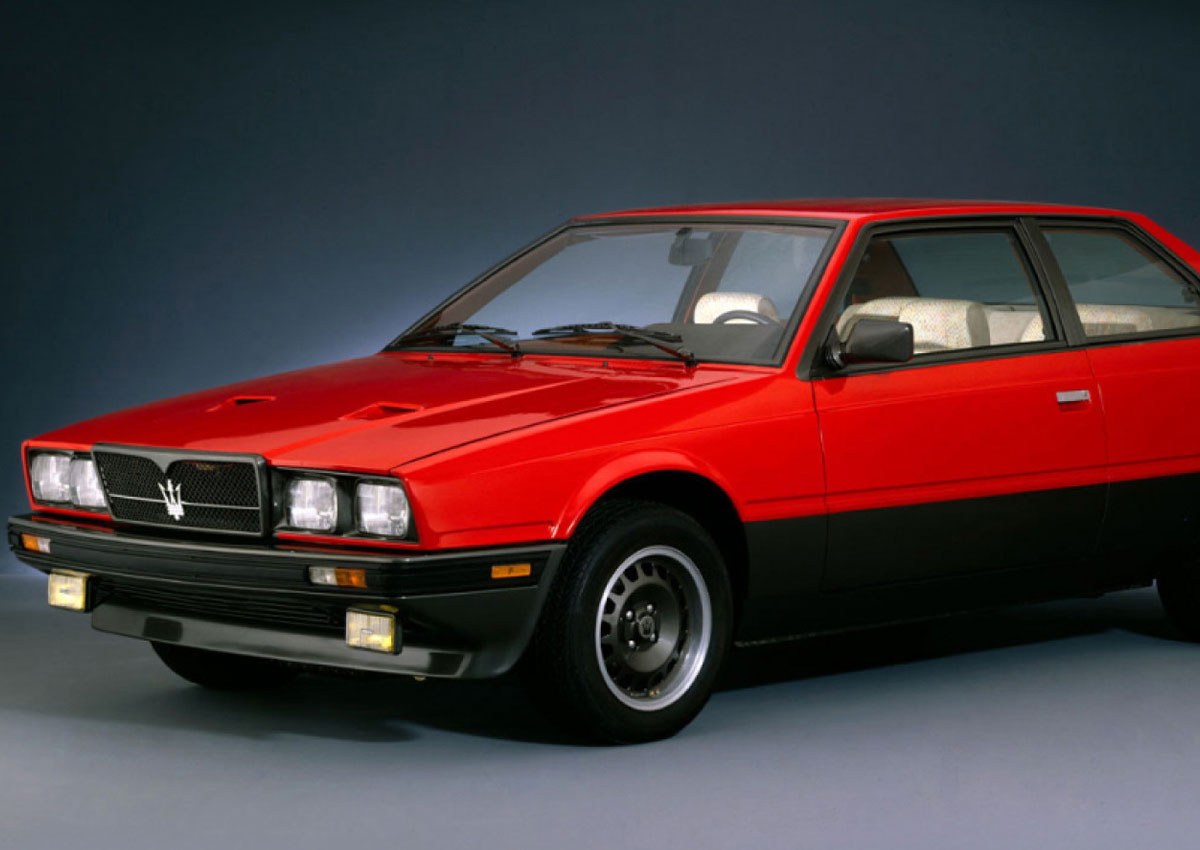
Alejandro De Tomaso aimed to expand the brand's reach with a new model that would combine the best performance with a competitive price. That's why in December 1981, Maserati introduced the Biturbo, ushering in a new era in the company's history.
Thanks to its superior performance and luxurious interior, the Biturbo sports coupe was a great success on the market. This model was the embodiment of De Tomaso's vision for the future of the Maserati brand and his desire to attract new customers by offering a car with outstanding performance at an attractive price.
The Maserati Biturbo, also known as the Tipo AM331, was a model produced from 1982 to 1985. A total of 11,919 cars of this series were produced.
The heart of the Maserati Biturbo was a 1996 cc V6 engine with twin turbochargers. This power unit developed 180 hp at 6000 rpm.
Thanks to this power, the Biturbo could accelerate to a top speed of 134 mph (216 km/h), which was an excellent performance for a car of the early 80s.
Maserati Biturbo 222 E

The Maserati 222 E, also known as the Tipo AM331, was introduced in 1988 as a replacement for the Biturbo Export model. This car, designed by the prominent stylist Marcello Gandini, contained a number of improvements aimed at improving aerodynamics, such as a round nose, new mirrors and a rear spoiler.
Less than two years after the launch of the 222 E, Maserati introduced the sportier SE version, which continued the Biturbo S tradition. In 1991, the 222 SE received an update that included new headlights, a grille, seven-spoke alloy wheels and a new aerodynamic spoiler at the base of the windshield. This updated version was designated the 222 SR.
Among the engineering achievements of the 222 SR was the newly developed “intelligent” suspension, available as an option. Under the hood of the Maserati 222 E was a 2,790 cubic-inch twin-turbocharged V6 engine that developed 225 hp at 5,500 rpm, allowing the car to reach a top speed of 137 mph.
Production of the Maserati 222 E lasted from 1988 to 1993, during which 722 copies of this model were produced.
Maserati Biturbo 425
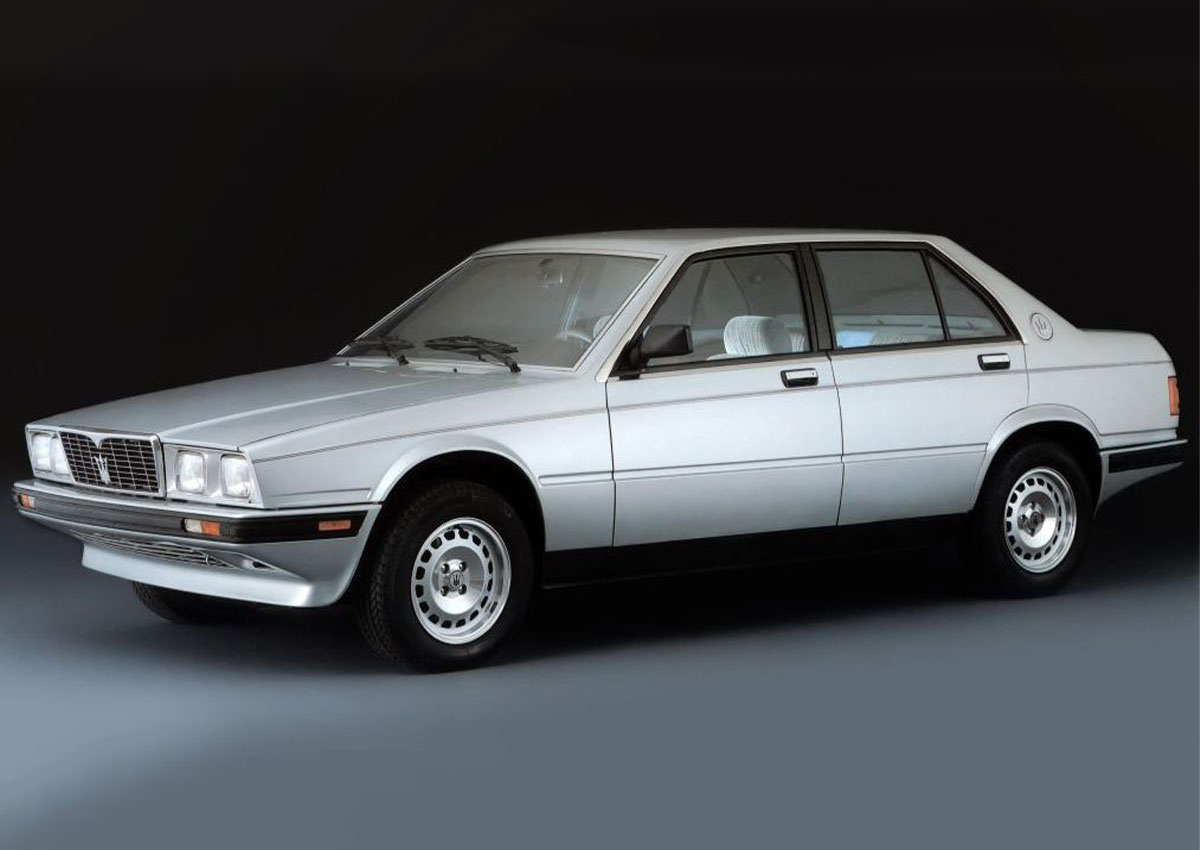
The Maserati Biturbo 425 is a four-door version of the legendary Biturbo, introduced just two years after the launch of the original model. Built on an elongated platform with a wheelbase of 2600 mm, the 425 retains the recognizable Biturbo styling, but marks Maserati's entry into the competitive market of compact high-speed premium sedans.
At the heart of the Maserati 425 is the new 2.5-liter V6 with twin-turbocharged technology, which debuted on the export versions of the Biturbo. This powerful engine developed 196 hp at 5,600 rpm, allowing the 425 to reach a top speed of over 215 km/h while maintaining an affordable price.
The 425's luxurious interior featured ergonomic seats upholstered in Missoni velor or custom leather. Air conditioning was standard, and an elegant set of leather bags and suitcases was offered as an option.
Between 1983 and 1989, 2,372 examples of the Maserati 425 (Tipo AM332) were produced. This sophisticated and dynamic sedan became a worthy competitor in the compact luxury car segment, offering an unsurpassed combination of Italian style, advanced technology and high performance.
Maserati Biturbo 420
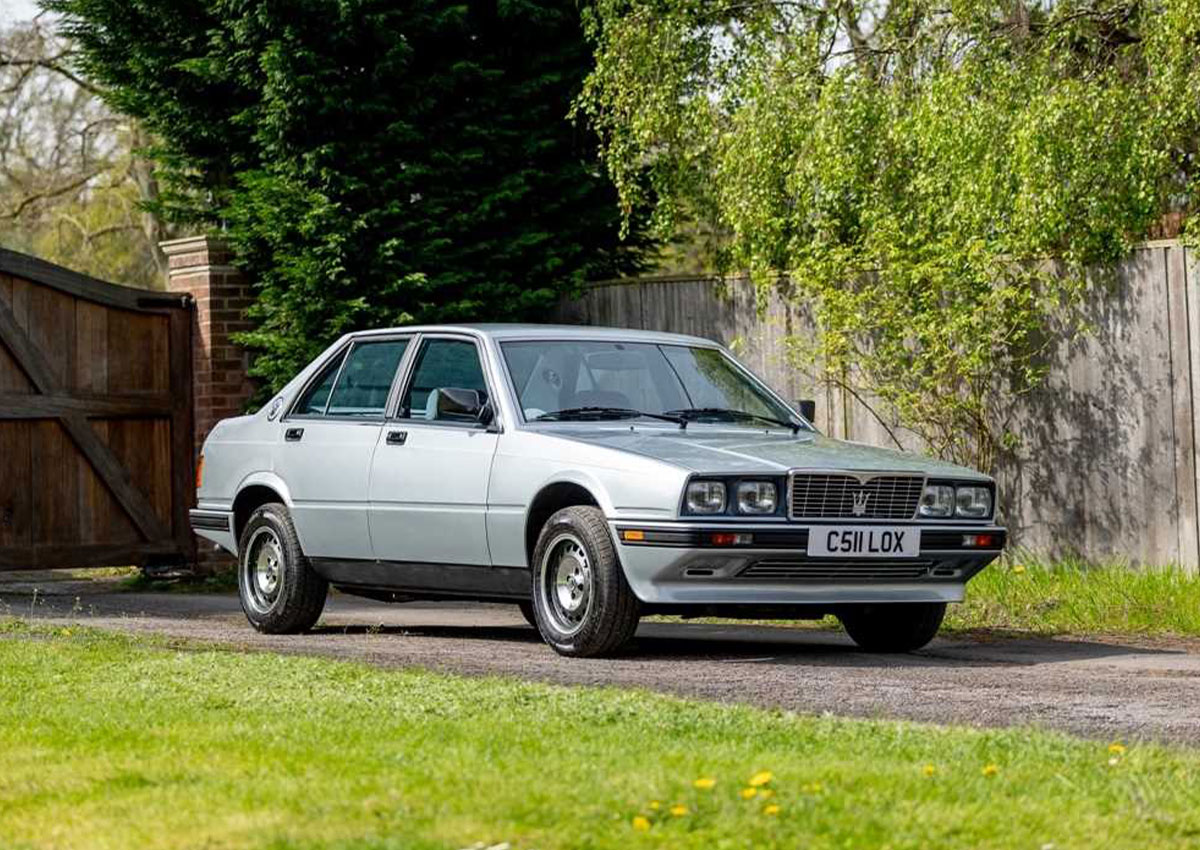
The Maserati 420 is a car model that was produced by the Italian manufacturer Maserati from 1985 to 1986. Here are the main characteristics of this model:
The Maserati Biturbo 420 was essentially the same car as the previous Maserati 425 model, but with a smaller 2.0-liter V6 engine instead of the 2.5-liter engine. This was done specifically for the Italian market, where in the 1980s there were high taxes on cars with engines larger than 2 liters.
The interior of the Maserati 420 was luxuriously hand-trimmed in red leather, which covered the center parts of the seats, the center console, the dashboard and the armrests.
Since 1986, the Maserati 420 has been equipped with the Weber fuel injection system. This modification was called the 420i. Otherwise, the car remained virtually unchanged, with only minor improvements to the suspension.
In just 2 years of production from 1985 to 1986, 1686 copies of the Maserati 420 were produced.
The car was equipped with a 2.0-liter V6 engine with two turbines, which developed 180 hp at 6000 rpm. The top speed of the Maserati 420 was 158 mph (about 254 km/h).
Maserati Biturbo 430
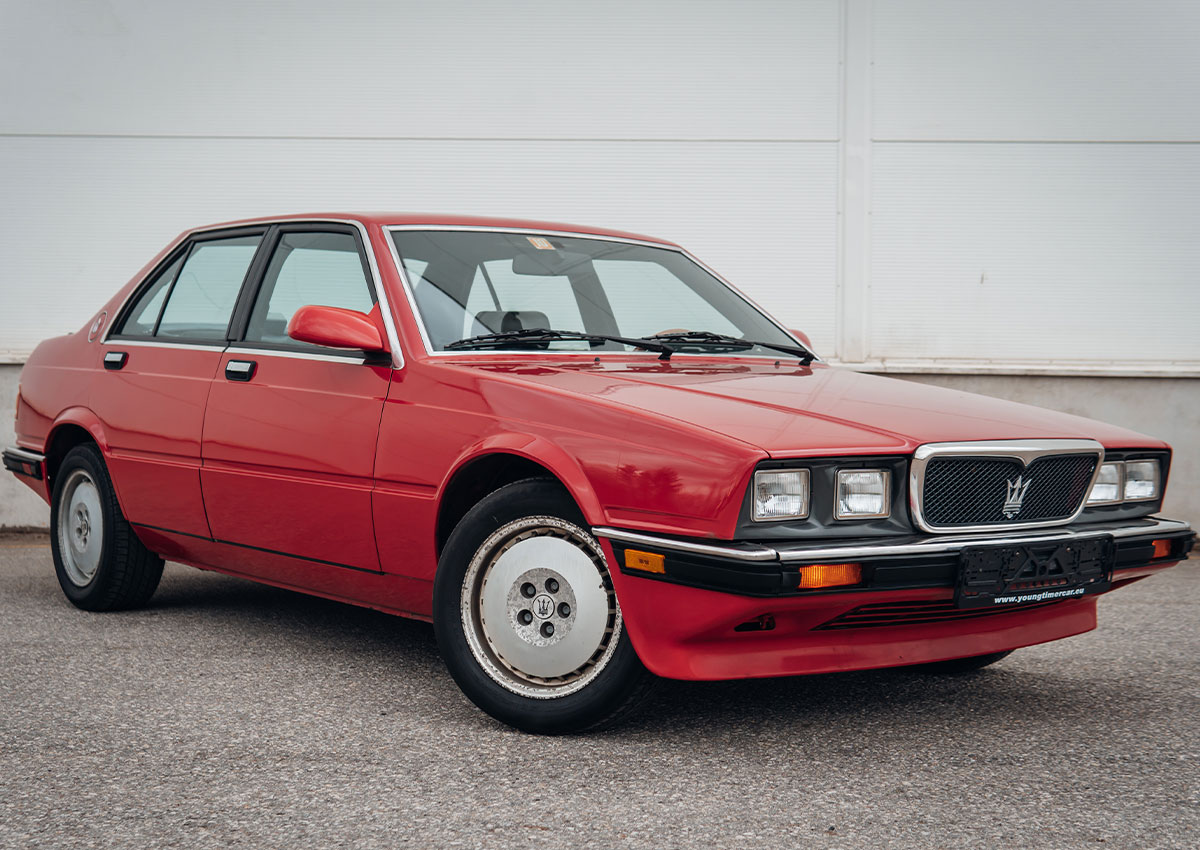
The Maserati Biturbo 430 is a luxury sports sedan that has become a worthy contender for leadership in its market segment. This model was introduced in 1987 as a complement to the 425 series, and in 1989 it completely replaced it.
The heart of the Maserati 430 is a new 2.8-liter V6 engine with two turbines and a fuel injection system borrowed from the 228 model. It developed up to 250 hp in versions without a catalytic converter, allowing acceleration to almost 240 km/h. Such impressive dynamic performance combined with a refined and luxurious interior brought the 430 to a whole new level.
Only 254 copies of the Maserati 430 (Tipo AM332) were produced between 1985 and 1994. The maximum speed was 149 mph (about 240 km/h), and the peak power of 250 hp was achieved at 5600 rpm. Such outstanding characteristics made this model one of the most desirable for connoisseurs of Italian sports cars of its time.
Maserati Biturbo 422

In 1988, Maserati introduced the 422 model as a replacement for all previous versions of the 420 four-door family, including the 420 Si, from which the new model inherited the technical filling.
The combination of leather upholstery and wooden decorative elements created a sense of exclusivity in the cabin, and the independent suspension with active electronic control on all four wheels provided excellent handling. The 4.18v model, released in December 1990, was designed specifically for the Italian market with a smaller engine displacement, but similar in performance to the 422. Its main feature was that, for the first time in the Biturbo family, the ABS anti-lock braking system was included as standard.
The Maserati 422 (Tipo AM332) was produced from 1988 to 1992. During this time, 978 cars were produced. The model was equipped with a 2.0-liter twin-turbocharged V6 engine with an output of 220 hp at 6,250 rpm. The top speed was 240 km/h (149 mph).
Maserati Biturbo Spyder
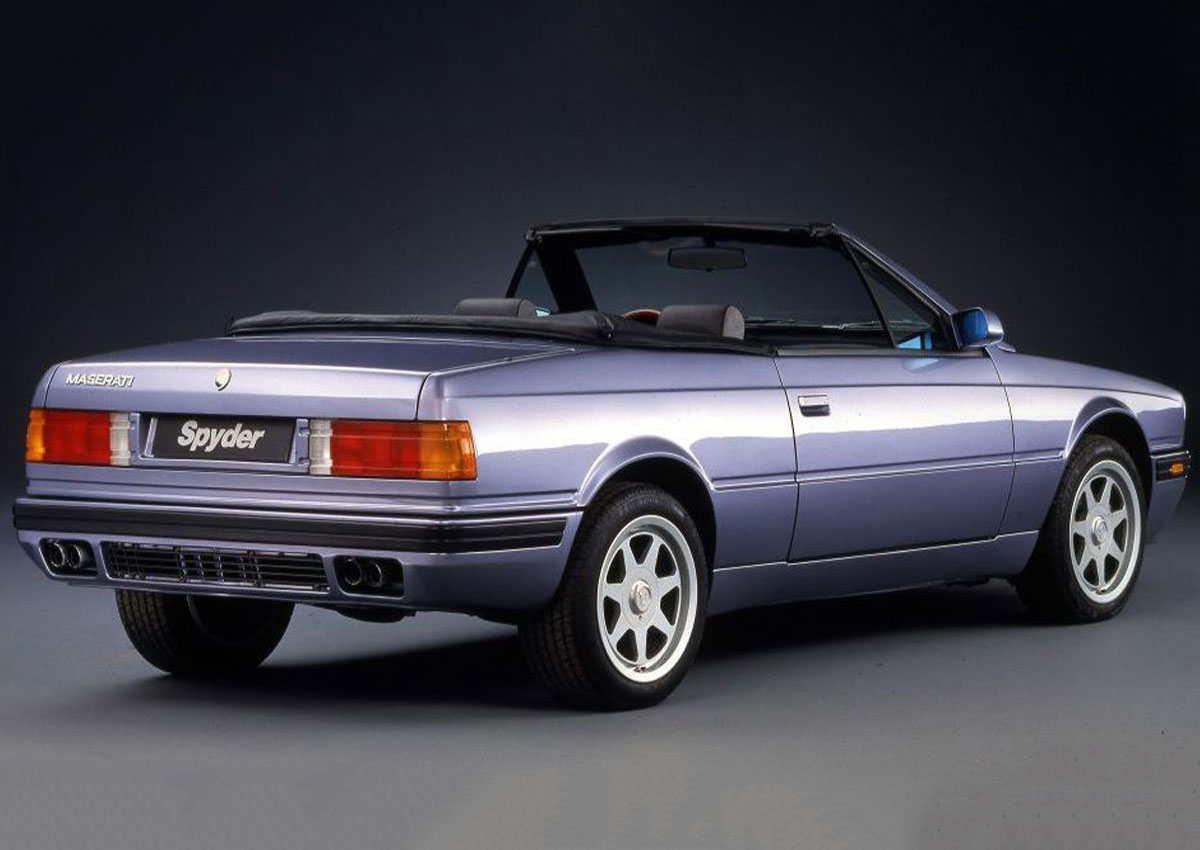
The Maserati Biturbo Spyder is an open version of the legendary Italian sports car that was produced from 1984 to 1986. The design of this model was developed by the famous Milanese atelier Zagato, and the bodies were assembled in Turin. After that, the cars were transported to the Maserati plant in Modena for final assembly.
Technically, the Maserati Biturbo Spyder (Tipo AM333) was very close to a coupe, except that the open versions were never equipped with a 2.8-liter 24-valve engine. Instead, a 2.0-liter V6 was offered for the domestic Italian market, and cars with a 2.5-liter unit were exported. Both engines were equipped with the Twin-Turbo system and developed 180 hp at 6000 rpm.
The Maserati Biturbo Spyder also differed from the Maserati coupe by a 114 mm shorter wheelbase (2400 mm versus 2514 mm), which gave the car greater maneuverability. In just under three years of production, only 276 copies of this model were assembled, making it quite rare. The maximum speed of the Maserati Biturbo Spyder was 134 miles per hour (about 215 km/h).
Maserati Biturbo Spyder 90
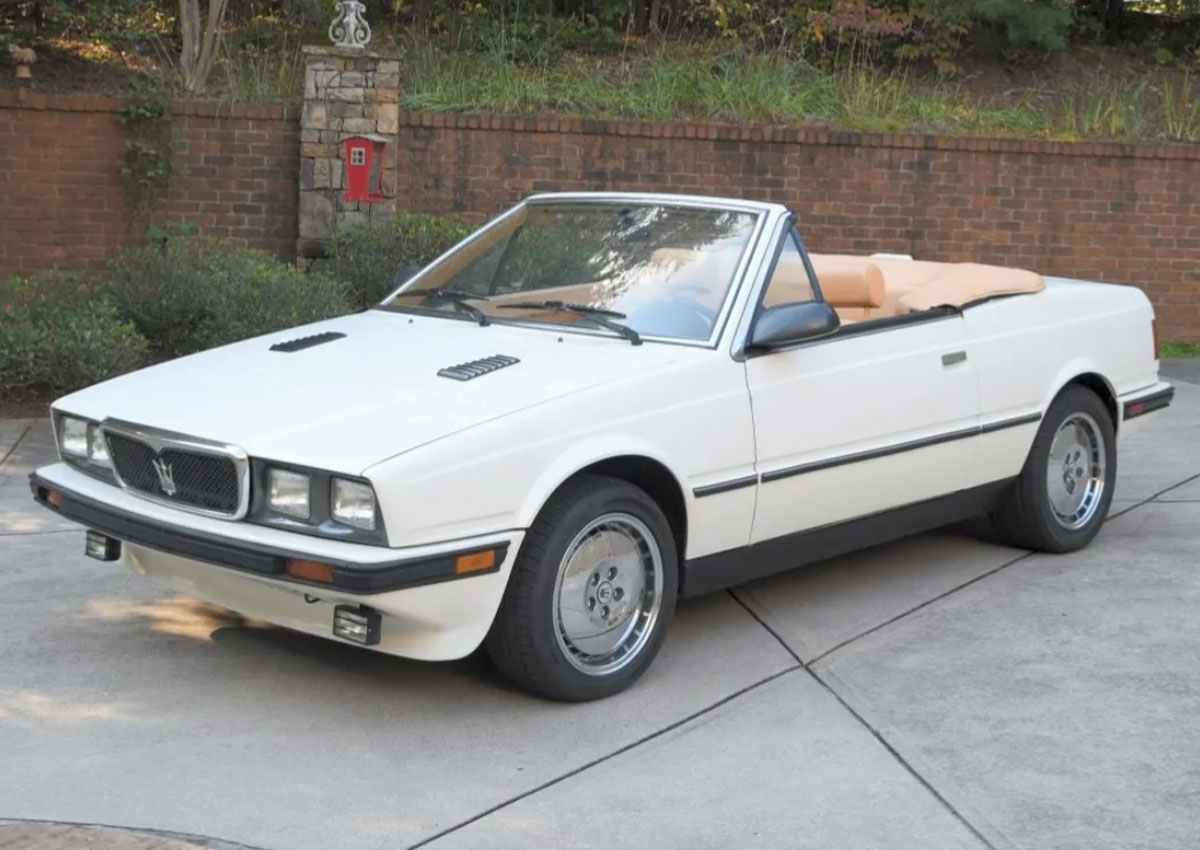
The Maserati Spyder 90, also known as the Tipo AM333, was introduced in 1989 as a redesigned version of the Biturbo Spyder. Manufactured by Zagato, these cars differed from previous models with updated front and rear bumper designs and larger 15-inch alloy wheels.
Under the hood of the Maserati Spyder 90 was a powerful 2-liter V6 twin-turbocharged engine that developed 220 horsepower at 6,250 rpm. Thanks to this, the car could accelerate to a top speed of 143 miles per hour (230 km/h).
Production of the Maserati Spyder 90 lasted from 1989 to 1992. During this period, only 122 copies of this exclusive model were produced, making it a true rarity among collectors and connoisseurs of Italian sports cars.
Maserati Biturbo Spyder 3
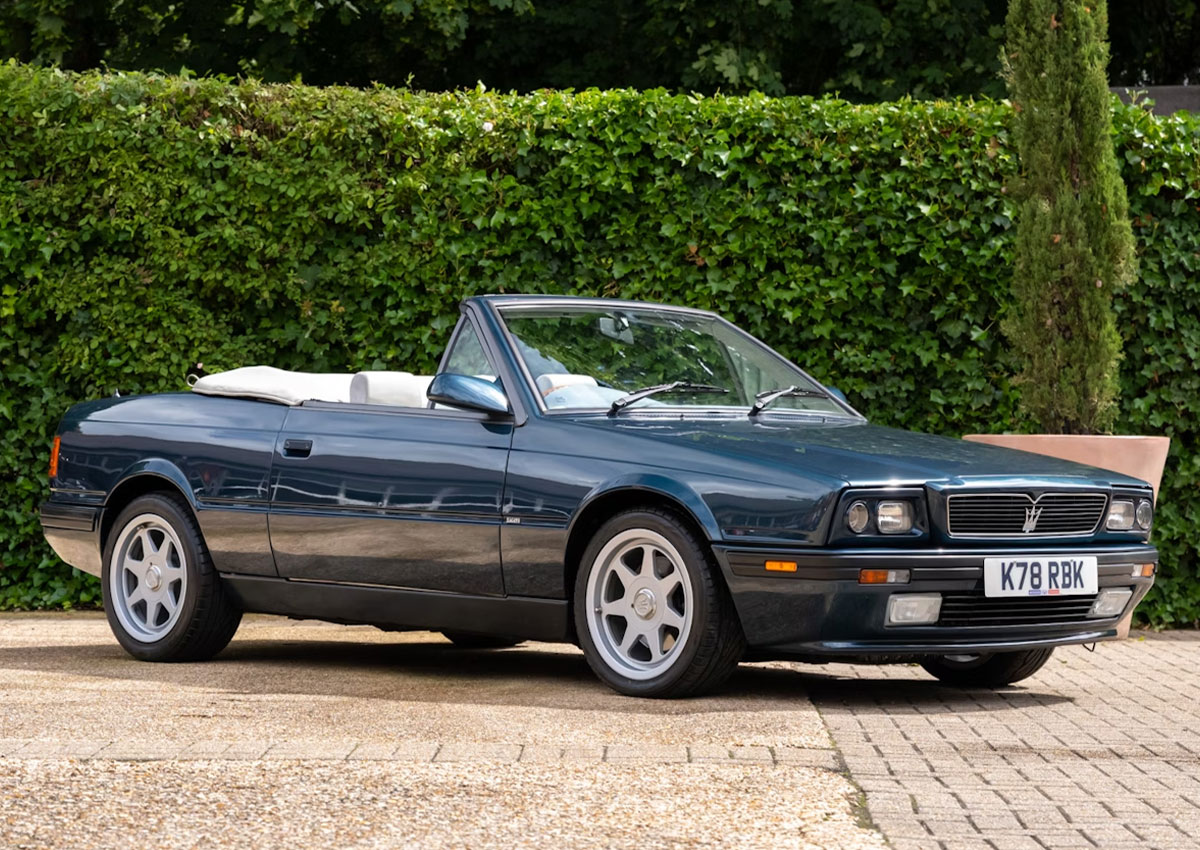
The Maserati Biturbo Spyder 3, model Tipo AM333, was produced from 1991 to 1994. During this period, 509 copies of this car were produced. Among the technical characteristics, it is worth noting a 1996 cubic cm V6 engine with two turbines, which developed 245 hp at 6000 rpm, allowing it to accelerate to a top speed of 143 mph.
The 1991 restyling brought a number of aesthetic and technical updates to the Spyder. The most significant modification was the introduction of cylinder heads with four valves per cylinder and four overhead camshafts. This change was aimed at improving engine performance, despite the need to install a catalytic converter to meet environmental regulations in some markets.
Maserati Biturbo 228
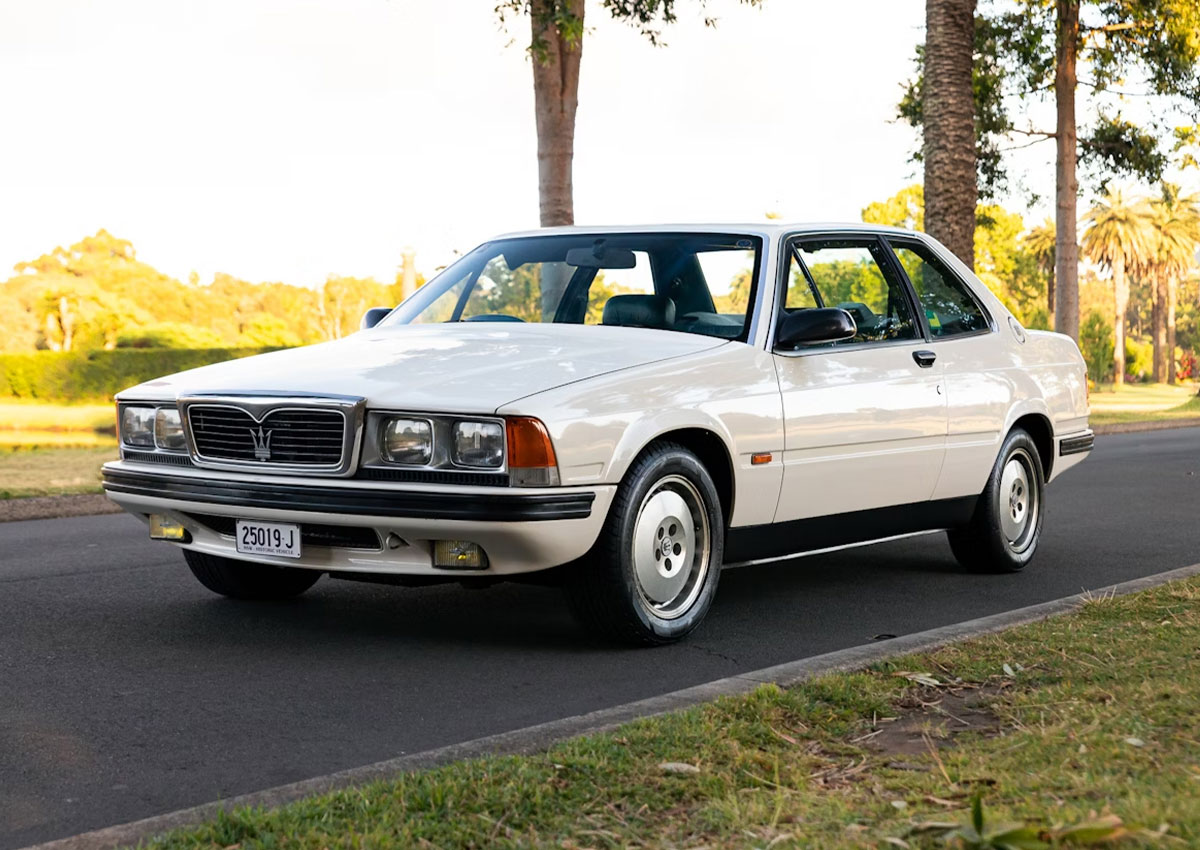
The Maserati Biturbo 228, introduced in 1987, was a worthy alternative to luxury coupes from Mercedes-Benz and BMW. The Tipo AM334 model was produced until 1991, and 469 copies were made during this time.
The 228 model resembled the Biturbo in many ways, but had softer body lines. The car was built on an extended chassis from the four-door Biturbo versions.
Standard luxury options included power steering, alloy wheels, central locking, power windows, and handmade leather interior. An ABS system was available on request.
Under the hood of the Maserati 228 was a 2.8-liter V6 with two turbines, producing 250 hp at 5600 rpm. Thanks to this engine, the car could accelerate to a top speed of 235 km/h.
The Maserati 228 became a worthy representative of the Italian automaker in the luxury coupe segment of the late 80s of the last century.
Maserati Karif
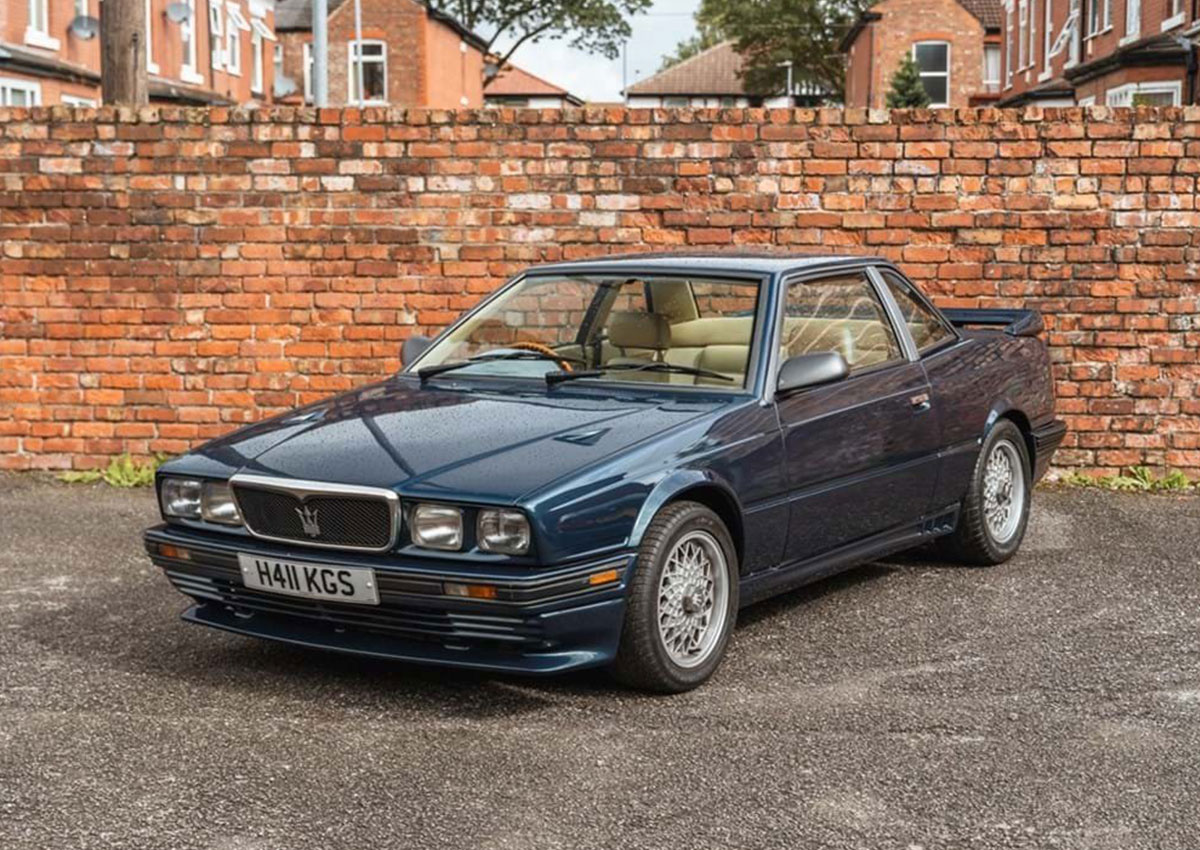
The Maserati Karif, model Tipo AM339, was presented to the world public at the Geneva Motor Show in 1988. This sports version was based on a shortened Biturbo Spyder chassis, and its wheelbase was 114 mm shorter. Thanks to the reinforced sills found on the Spyder's floor panel, the Karif had greater torsional rigidity, which further improved its handling and performance.
Under the hood of the Maserati Karif was a powerful 2.8-liter twin-turbocharged V6 engine that developed 255 hp at 5,500 rpm. This configuration allowed the car to reach a top speed of 158 mph (about 254 km/h).
During the three years from 1988 to 1991, only 221 copies of the Maserati Karif were produced, making this model quite rare and exclusive. Designed with sporty intentions, the Karif became a worthy representative of the Maserati Biturbo line, offering a combination of high performance, refined design and Italian craftsmanship.
Maserati Shamal

The Maserati Shamal is the most extreme evolution of the original Biturbo family, named after the Mesopotamian wind. Under the hood of this model was a completely new innovation - a twin-turbocharged V8 engine with four camshafts and 32 valves, which replaced the previous V6 engine.
The aggressive body design from the pen of Marcello Gandini was completely new and instantly recognizable thanks to the distinctive shape of the rear wheel arches. The new engine was mated to a new manual six-speed gearbox from Getrag.
The Maserati Shamal was produced from 1990 to 1996 under the internal designation Tipo AM339. Only 369 copies of this model were produced during this period. The 3217 cc twin-turbocharged V6 engine developed 326 hp at 6000 rpm, allowing the car to accelerate to a top speed of 168 mph.
Maserati Racing
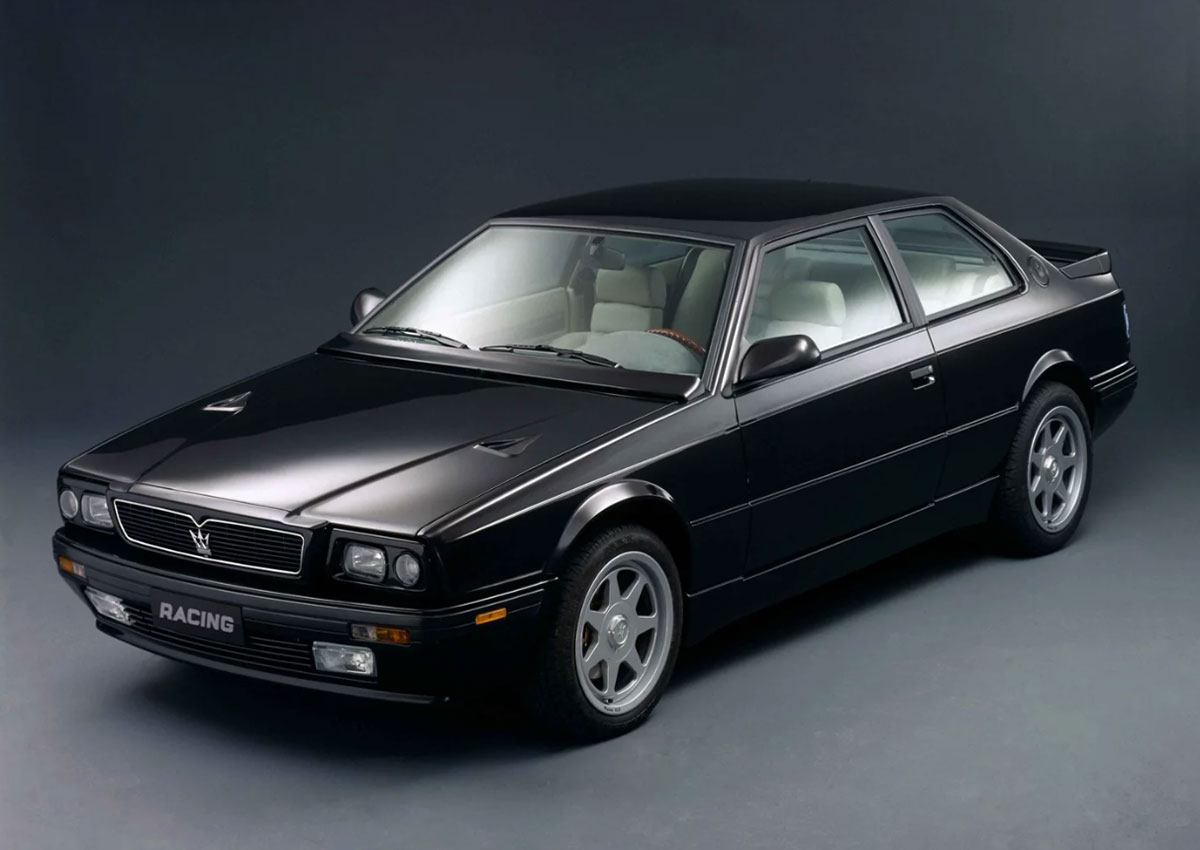
The Maserati Racing, introduced in December 1990, continued the evolution of the Biturbo line. The car received an updated front end design inspired by the Shamal model. Mechanical improvements included a new Getrag gearbox and intelligent active shock absorbers from Koni.
Under the hood is a 2.0-liter twin-turbocharged V6 engine with 24 valves, which has undergone a number of modifications. In particular, a new crankshaft, lightweight connecting rods and an increased compression ratio were installed. With these changes and modified turbochargers, the Maserati Racing, capable of reaching speeds of up to 160 mph, became the most powerful production car with a 2.0-liter engine in the world.
The Maserati Racing model with the internal designation Tipo AM331 was produced from 1990 to 1992. Only 230 copies were produced during this period. The car was equipped with a 2.0-liter twin-turbocharged V6 engine that developed 283 hp at 6000 rpm. The top speed of the Maserati Racing reached 159 mph.
Maserati Ghibli
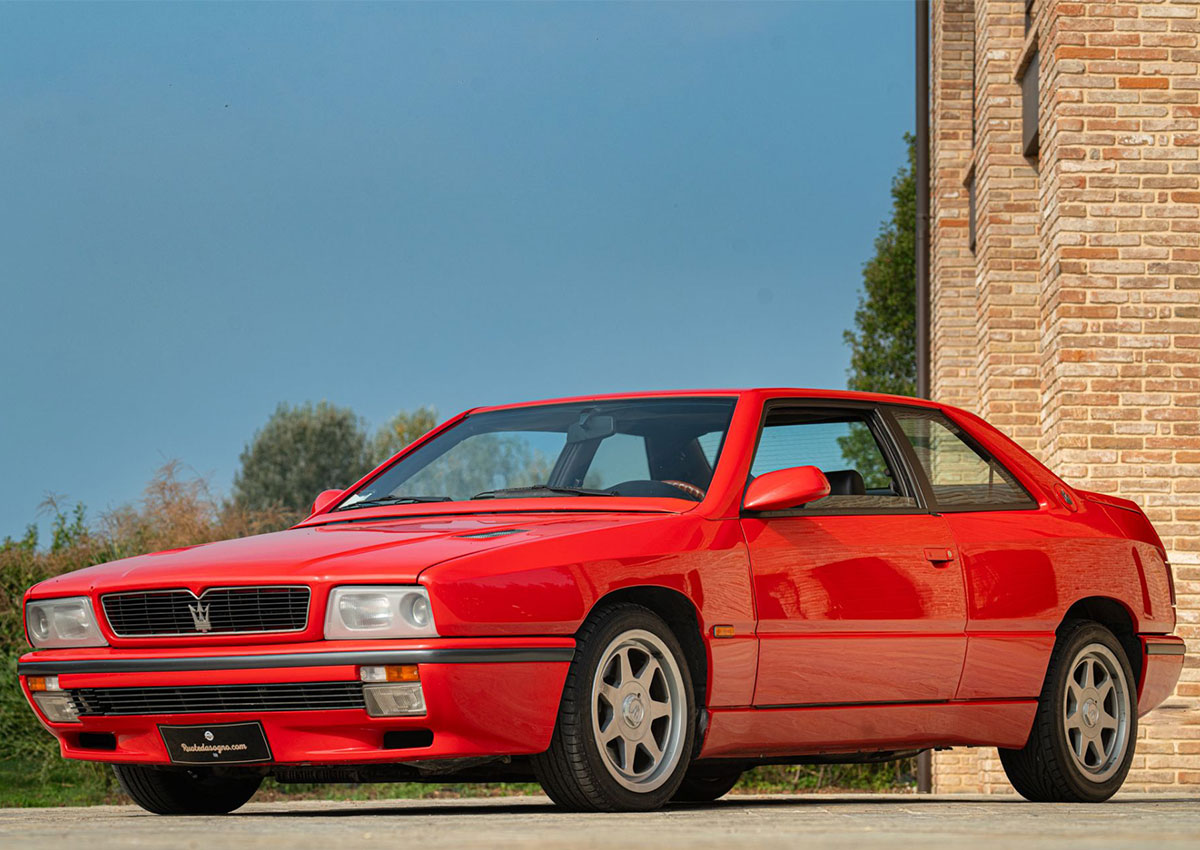
The Maserati Ghibli, based on the Biturbo platform, received a completely modern and wider body design. For the domestic market, the car was offered with a 2.0-liter V6 engine, and for export markets - with a 2.8-liter V6.
The aluminum V6 engine reached its peak of development with a twin cam, four valves and a maximum output of 306 hp. In 1995, the Ghibli was renamed the Ghibli GT and underwent a number of technical modifications, including a new rear differential.
The Maserati Ghibli II (Tipo AM336) was produced from 1988 to 1991. During this period, 1157 cars were produced. The model was equipped with a 2.8-liter twin-turbocharged V6 engine that developed 306 hp at 6250 rpm. The top speed of the Ghibli II was 162 mph.
From 1992 to 1998, the Maserati Ghibli 2.8 (Tipo AM335) was produced. A total of 1063 copies of this version were produced. The car was equipped with a 2.8-liter twin-turbocharged V6 engine that developed 260 hp at 6000 rpm. The Ghibli 2.8 also had a top speed of 162 mph.
Maserati Ghibli Cup
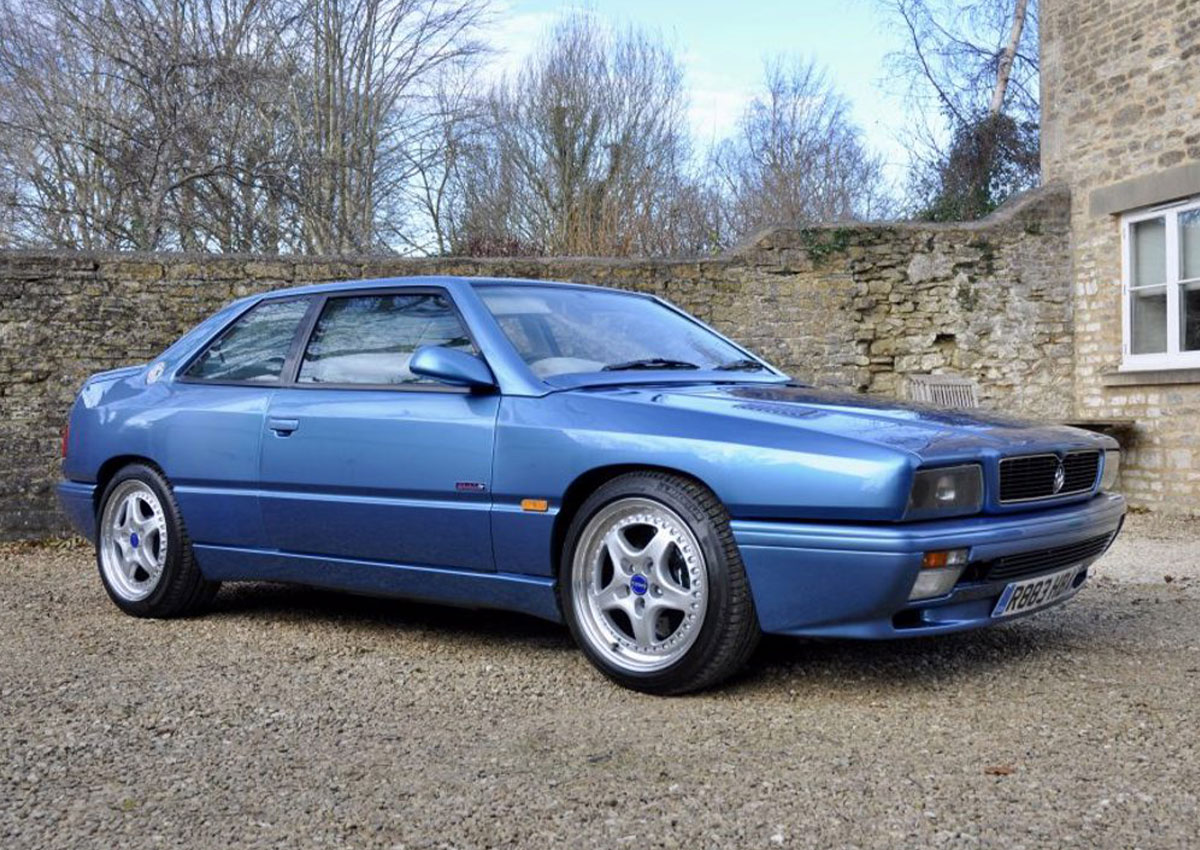
The Maserati Ghibli Cup is a production car that was unveiled at the Bologna Motor Show in December 1995. It is directly derived from the racing version of the Open Cup, but has been modified for use on public roads.
Despite its low-key appearance, the Ghibli Cup was recognizable by its distinctive features, such as five-spoke Speedline alloy wheels, lower suspension, more aggressive braking components, and a racing-type aluminum fuel filler cap. The color scheme was limited to four options: red, white, yellow, or French blue.
At the heart of the Ghibli Cup was a 2.0-liter twin-turbocharged V6 that developed an impressive 330 hp at 6,500 rpm. With this power, the car could accelerate to an effective top speed of nearly 168 mph, making it the world's most powerful production 2.0-liter car at the time.
Production of the Maserati Ghibli Cup lasted from 1995 to 1997, and only 60 examples were produced during this period. The model was internally designated Tipo AM336 and became a real rarity among Maserati enthusiasts and car collectors.


